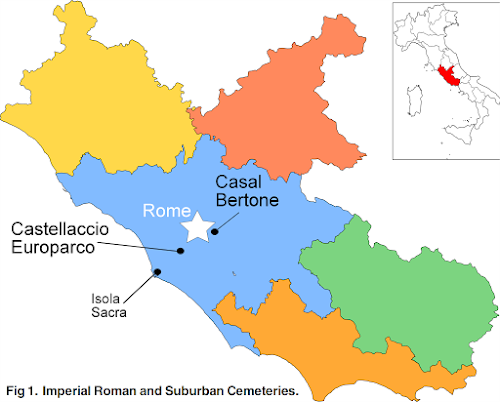According to Dr. Steve Hertzler of Iowa State University:
First, it is very important that people do not "self-diagnose". In addition, even when an individual goes to a physician for a diagnosis, the physician often uses an incorrect approach. The classic example of this is to put the patient on a lactose-free diet and see if the symptoms go away. The potential for "placebo" effect in this type of diagnosis is enormous. From double-blind studies our laboratory group conducted at the University of Minnesota, 1 out of 3 people who "self-diagnosed" themselves as severely lactose intolerant were actually able to digest 15 g lactose (just over 1 cup of milk). It is important to have objective evidence of lactose maldigestion. It is also important to realize that lactose maldigestion among varying individuals is more of a continuum than an "either-or" phenomenon. For example, traditional lactose tolerance tests done by physicians used 50 g of lactose in water after an overnight fast. This is equivalent to drinking a quart of milk on an empty stomach! This is not very physiological or realistic. Just because a person can not tolerate 50 g does not mean that he/she won't tolerate the 12 g in a cup of milk. In our double-blind studies, the symptom response to 12 g lactose was about 25% of subjects, which was not statistically different from a lactose-free placebo. Dose of lactose is a very important factor.
How should lactose intolerance be diagnosed? First, there is a difference between lactose maldigestion and lactose intolerance. The former term means that a person is unable to digest lactose to a certain degree. On average, lactose maldigesters malabsorbed about half of the lactose in 1 cup of milk (some more, some less). However, not everyone experiences symptoms from lactose maldigestion. I once did breath hydrogen testing on a dietitian who worked for the National Dairy Council. She turned out to be a lactose maldigester, but she had no symptoms from drinking milk. Lactose intolerance is when lactose maldigestion is coupled with gastrointestinal symptoms such as diarrhea, flatulence (most common), and stomach discomfort. A person who is experiencing GI symptoms that he/she suspects might be related to lactose maldigestion needs to have confirmation by an objective test. This is important to rule out other potential bowel conditions. Irritable bowel can often masquerade as lactose intolerance.
A later study on Sicilians (who are supposedly one of the most lactose intolerant groups in Europe) took all these facts into account and found a much lower frequency of the condition in a representative sample:
The present study is the first to attempt to clarify the dimensions of the problem of self-reported milk-intolerance, the real correspondence between self-reported milk-intolerance and gastrointestinal symptoms following the breath hydrogen test, and the impact of this self-diagnosis on dietary intake of total calories, proteins and calcium, using data from the general population and not from a pre-selected sample.
In a wide randomized sample representative of a rural community, we observed that 36% of the population were lactose-maldigesters, but only 4% of the whole study group (13% of the maldigesters) showed lactose intolerance after an oral load of 25 g lactose. Although many previous studies have reported a much higher frequency of gastrointestinal symptoms after lactose load in subjects with maldigestion, it has been underlined how field investigations indicate a greater average tolerance to milk than studies on patients referred to hospitals because of aspecific abdominal complaints.
[...]
After the cases of self-reported milk intolerants were selected, the analysis of the results is more interesting. The percentage of subjects who believe that they cannot tolerate milk and accordingly reduce milk consumption is considerable: 15% of the examined population. The results of the breath test after lactose challenge were, however, surprising: a) more than 1/3 of these subjects were actually lactose digesters and tolerants (normal H2 breath test and no symptoms following lactose load); b) only 10% of the self-reported lactose-intolerants were really intolerants and showed symptoms after a 25 g lactose load. These results, obtained in a non-selected group of healthy subjects representative of the general population, are in agreement with those recently reported by Suarez et al who showed that 9/30 self-reported lactose intolerants had a normal lactose digestion capacity and that in the remaining 21/30 the gastrointestinal symptoms did not worsen during administration of lactose-containing milk. It is therefore likely that in order to explain the gastrointestinal symptoms of many lactose-maldigesters, the possibility of a diagnosis of irritable bowel syndrome or of non-ulcer dyspepsia should be investigated. Our study also clarifies the impact of self-reported milk intolerance on dietary habits. These subjects did not consume milk, or consumed very low quantities of milk and their daily calcium intake was significantly lower. It must be underlined that in the population we studied daily calcium intake was generally much lower than the recommended level (500 mg vs. 800–1000 mg/day), and an unnecessary self-limitation of the consumption of a food rich in calcium, as milk is, seems to be a particularly serious risk factor for osteoporosis. In particular, recent prospective studies have suggested that reduced calcium intake during the adolescence and early adulthood may have a great impact on bone mineral density measurements; this result must induce physicians to pay particular attention to dietary calcium intake.
In conclusion, we affirm that in a representative sample of the general population, with an approximately 40% prevalence of lactase insufficiency, there was: a) a low frequency of lactose intolerance (4%); b) an incongruous overestimation of the frequency of milk intolerance: 15% of the general population; c) a low dietary calcium intake, which is even less satisfactory (300 mg/day) in subjects who limit milk consumption due to self-reported milk intolerance. Lactose digestion capacity should therefore be carefully investigated in all self-reported milk intolerant subjects.
Carroccio et al. "Lactose intolerance and self-reported milk intolerance: relationship with lactose maldigestion and nutrient intake". J Am Coll Nutr, 1998.






